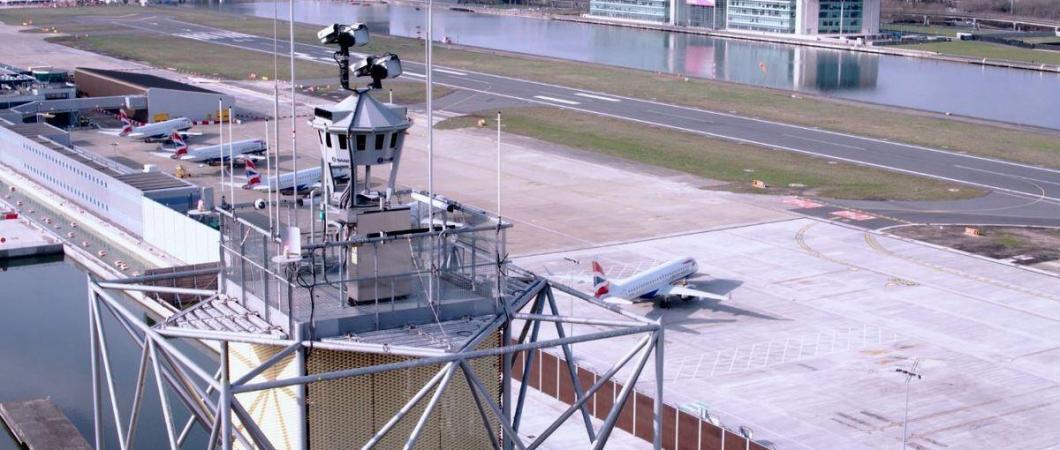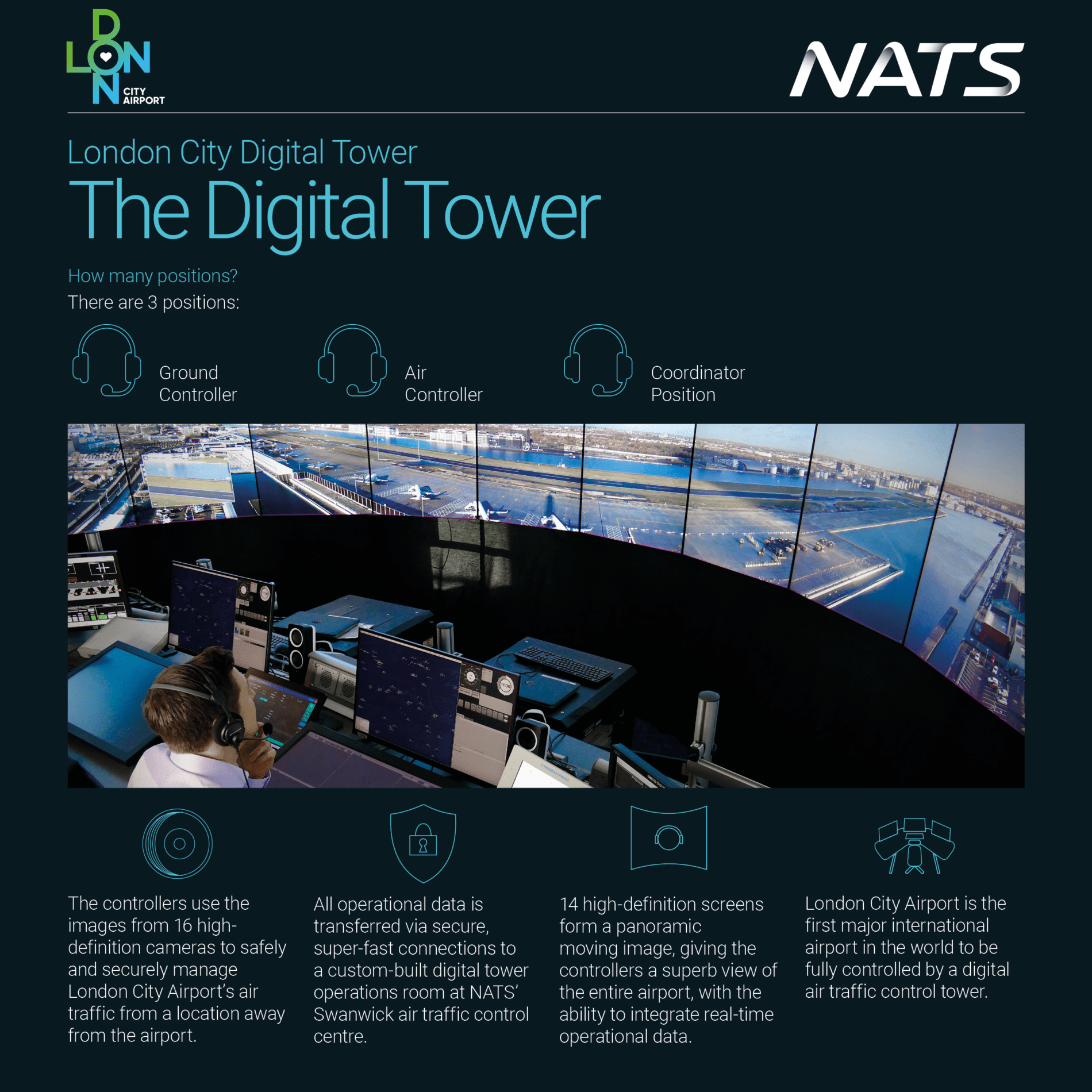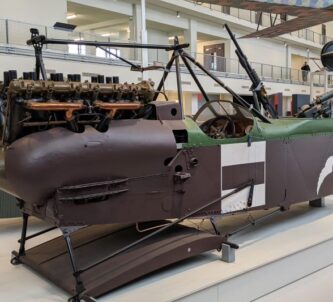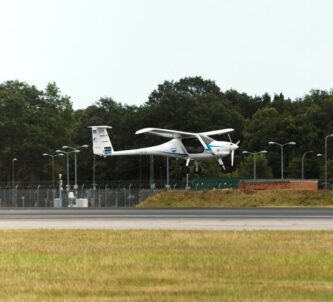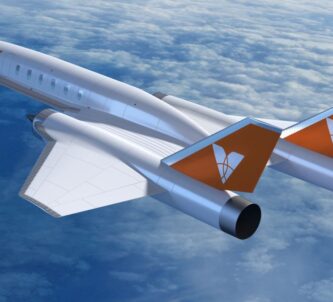London City Airport has just become the world’s first major international airport to be controlled remotely from an entirely digital control tower.
Its new 50 metre (164 feet) Air Traffic Control (ATS) tower allows controllers 115 km (70 miles) away in Swanwick, Hampshire, to control all movements at the airport. Swanwick is home to NATS (National Air Traffic Services), which is the UK’s primary ATC provider.
The remote control system developed by Saab uses sixteen high-definition cameras and sensors mounted on the mast to capture a 360-degree view of the City Airport airfield. This is relayed through super-fast fibre connections to a new control room in NATS’ air traffic control centre in Swanwick where a dedicated team of controllers use the live footage, an audio feed from the airfield, and radar information to view & control aircraft movements in and out of the airport.
The live feed from the digital control tower, transmitted through independent secure fibre networks, is displayed on 14 HD screens in the Swanwick control room to provide a panoramic moving image. This can be overlaid with digital data to provide an ‘enhanced reality’ view.
Information such as call signs, altitude and speed of all aircraft approaching and leaving the airport, weather readings and the ability to track moving objects can all be included in this single visual display. Pan-tilt-zoom cameras replace the trusty pair of binoculars used in traditional control towers by magnifying images up to 30 times for close inspection.
Juliet Kennedy, Operations Director at NATS, says “This is the UK’s first major digital control tower and represents a significant technological and operational achievement, especially against the backdrop of COVID-19. Digital tower technology tears up a blueprint that’s remained largely unchanged for 100 years*, allowing us to safely manage aircraft from almost anywhere, while providing our controllers with valuable new tools that would be impossible in a traditional control tower.”
So, what happens if something goes wrong? What happens if workmen unintentionally dig up the dedicated fibre optic feed and the link goes down? What happens when a pigeon craps on one of the hi-def cameras?
Well, every essential piece of equipment has a fall-back, says Paul Beauchamp, Senior Manager, Brand PR and Marketing Communications at NATS.
“So for example there are multiple, independent data links that take separate routes from Swanwick and London City to guard against your exact example. Those are also private connections – ie we’re not using a consumer broadband network – for added resilience.”
“The camera housing is equipped from compressed ‘air knives’ to blow away dirty, insects, birds etc, plus we have engineers on site to clean the glass as needed. If a camera fails, one of the separate ‘pan tilt zoom’ cameras can fill its space. Likewise in the operations room as Swanwick we’ve got a standby screen ready to go as needed. [And] Swanwick Centre itself also has multiple power sources, including generators and battery back up.”
The new tower was actually completed in 2019 and went through an extensive period of testing before becoming fully operational in January this year. It is now ready to handle what the airport believes will be a major expansion of flights and routes as post-pandemic passenger demand takes off.
The 30-year-old traditional control tower, which was due a significant upgrade, will be redeveloped as part of the airport’s modernisation programme. I’m guessing a 360º clubhouse/dining experience…? What do you think?
* The world’s first traditional control tower was pioneered just down the road at Croydon airport on the outskirts of London.

